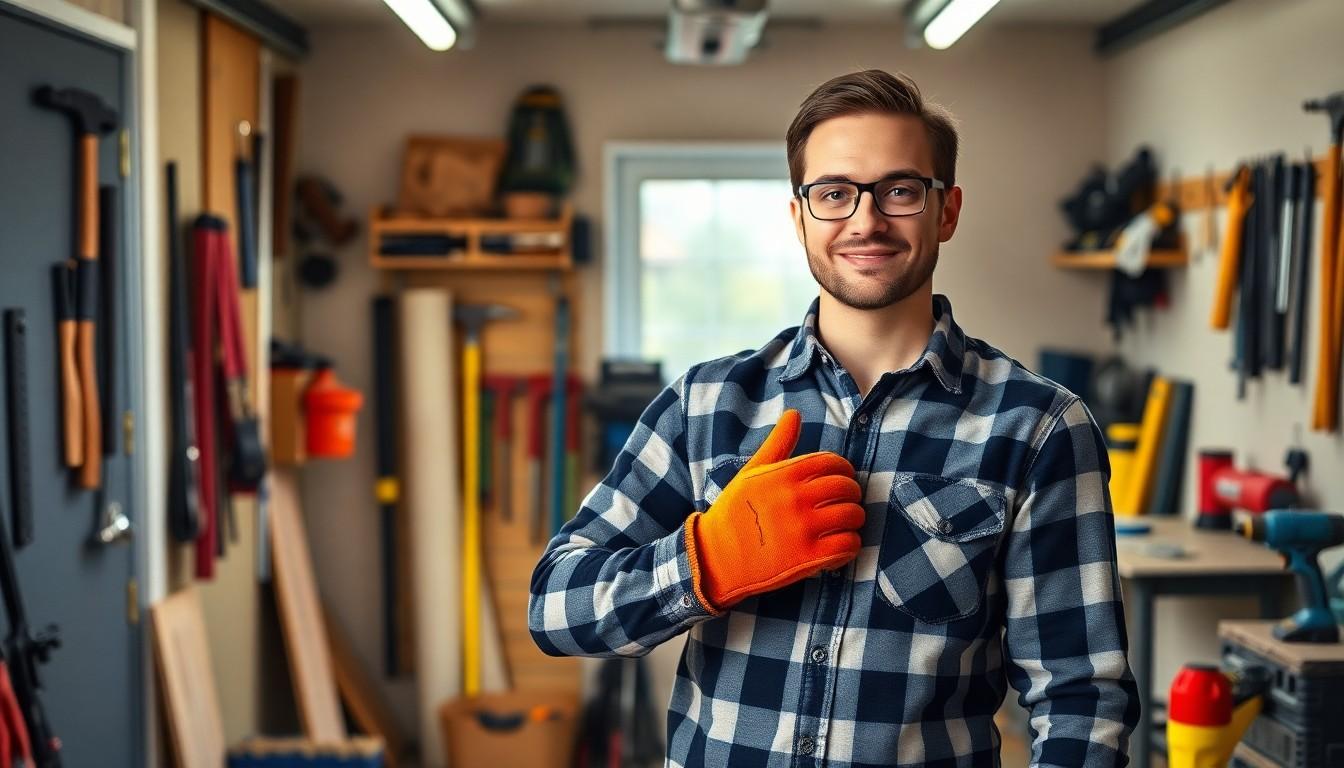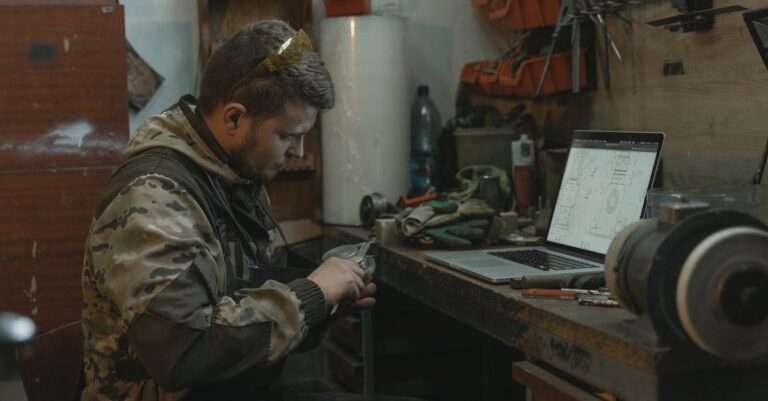Home repairs can feel like a daunting task, but they don’t have to be. With a little know-how and a dash of humor, anyone can tackle those pesky projects without calling in the cavalry—or the handyman. Imagine saving money while impressing friends with your newfound skills. Who knew fixing a leaky faucet could lead to a standing ovation at your next gathering?
From squeaky doors to drywall disasters, DIY home repair is not just about fixing; it’s about unleashing your inner MacGyver. Armed with a trusty toolbox and a few online tutorials, anyone can transform their home into a masterpiece. So roll up those sleeves, grab that hammer, and let’s dive into the world of home repair where mistakes become funny stories and every project is a chance to learn something new.
Table of Contents
ToggleUnderstanding DIY Home Repair
DIY home repair offers individuals a chance to improve their living space while developing practical skills. Embracing challenges can lead to rewarding experiences and personal growth.
Benefits of DIY Home Repair
Saving money on repairs tops the benefits list, as homeowners handle tasks without hiring professionals. Flexibility in scheduling allows for convenient project timelines. Developing new skills enhances confidence, enabling individuals to tackle increasingly complex tasks. Restoring or upgrading a home fosters a sense of accomplishment, especially after completing a project independently. Additionally, customizing repairs lets homeowners express personal style, making spaces more enjoyable. Online resources provide access to tutorials and community support, reducing intimidation and boosting creativity.
Common Misconceptions
Many believe DIY home repair requires extensive experience, which isn’t true. Anyone can learn basic skills through practice and online resources. Some think it takes too much time, though many projects can be completed in a few hours. People also assume DIY repairs must look professional; however, imperfections often add character and charm. Concerns about safety are valid, yet adhering to guidelines ensures safe practices. Lastly, the myth that DIY repairs lead to more problems persists, but careful planning and research typically prevent major mishaps.
Essential Tools for DIY Home Repair

Equipping a home with essential tools sets the foundation for successful DIY repairs. Identifying and obtaining the right tools can simplify various home projects.
Basic Tools Every Homeowner Should Have
Pliers are essential for gripping, twisting, and cutting wires, facilitating numerous tasks. A set of screwdrivers, including flathead and Phillips, enables easy fastening and unfastening of screws. Hammers, especially a claw hammer, help in driving nails efficiently. Tape measures ensure precise measurements, eliminating guesswork. Utility knives excel in cutting materials like drywall and carpet. Level tools bring accuracy to hanging items straight. Finally, a cordless drill streamlines drilling and screwing, enhancing the speed of projects.
Specialized Tools for Specific Repairs
Plumbing wrenches tackle pipe fittings, making plumbing repairs manageable. Electricians find multimeters invaluable for testing electrical currents, ensuring safe handling of wiring projects. A stud finder simplifies locating wall studs when hanging heavy objects. Caulking guns assist in sealing gaps effectively, useful for both aesthetics and energy efficiency. Tile cutters create clean lines for bathroom or kitchen renovations. For outdoor tasks, a landscape rake helps level and groom soil. These specialized tools enhance the ability to handle various repair challenges with confidence.
Common DIY Home Repair Projects
DIY home repairs often deliver a sense of fulfillment and practical knowledge. Various projects can enhance living spaces and save money.
Fixing Leaky Faucets
Fixing leaky faucets involves a few straightforward steps. Identify the source of the leak, often attributed to worn out washers or O-rings. Turn off the water supply before beginning the repair. Use a wrench to remove the faucet handle and access internal components. Replacement parts can be found at hardware stores. Reassemble the faucet and turn the water back on to check for leaks. Successful repairs eliminate waste and lower water bills.
Patching Drywall Holes
Patching drywall holes is a manageable task for DIY enthusiasts. Gather the necessary materials, such as spackle or joint compound, a putty knife, sandpaper, and paint. Clean the area around the hole before applying the filler. Smooth the compound with a putty knife, allowing it to dry thoroughly. Sand the surface for a seamless finish. Finally, paint the patched area to match the surrounding wall. Completing this project enhances the overall appearance of a room.
Painting Walls
Painting walls offers a chance to refresh the look of any space. Begin by gathering high-quality paint, brushes, rollers, painter’s tape, and drop cloths. Clear the room of furniture and cover floors to protect them. Apply painter’s tape along edges for clean lines. Once the prep work is done, start with a primer, especially for bold colors. Evenly apply paint, using multiple coats as necessary for coverage. Completing this project can significantly uplift the interior atmosphere.
Tips for Successful DIY Home Repair
Successful DIY home repair relies on careful planning and awareness of safety measures. Understanding these elements lays the groundwork for a smooth project experience.
Planning and Preparation
Planning ensures that the DIY project runs efficiently. Start by assessing the problem and determining necessary repairs. Gather supplies and tools ahead of time to avoid interruptions during the work. Create a timeline that breaks the project down into achievable steps. Consider measuring spaces and materials before purchasing. This approach prevents excess spending and waste. Seeking guidance from reliable online resources can offer valuable insights and trickle-down tips, adding to the overall success of the project.
Safety Considerations
Safety plays a critical role in DIY home repair. Use protective gear, including gloves, goggles, and masks, to guard against injuries and inhalation of harmful substances. Ensure adequate ventilation when working with chemicals or paints. Inspect tools before use to confirm they are in good working condition. Familiarize yourself with safety instructions and guidelines pertinent to each project. Recognizing emergency exits and having a first aid kit nearby provides peace of mind. These precautions help maintain a safe working environment and contribute to a successful DIY experience.
Embracing DIY home repair opens up a world of possibilities for creativity and personal growth. With the right tools and resources anyone can tackle projects that not only enhance their living space but also build confidence and skills. Each completed task brings a sense of accomplishment that goes beyond mere repair.
By taking on these challenges homeowners can transform their spaces while saving money and impressing friends with their newfound abilities. Mistakes become valuable lessons and every project offers a chance to learn and adapt.
Ultimately DIY home repair is about more than fixing what’s broken; it’s about creating a home that reflects individual style and resilience. So grab those tools and start your next project today.



